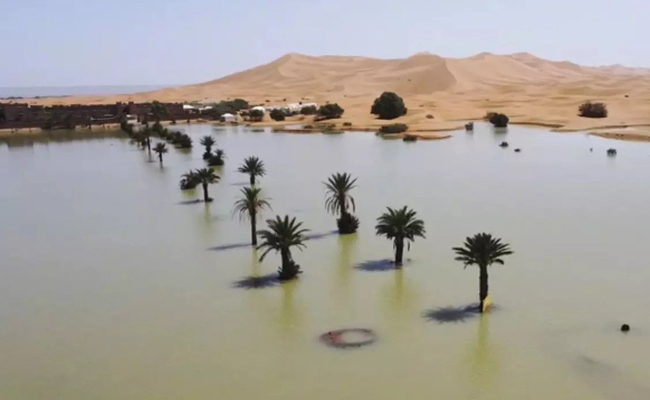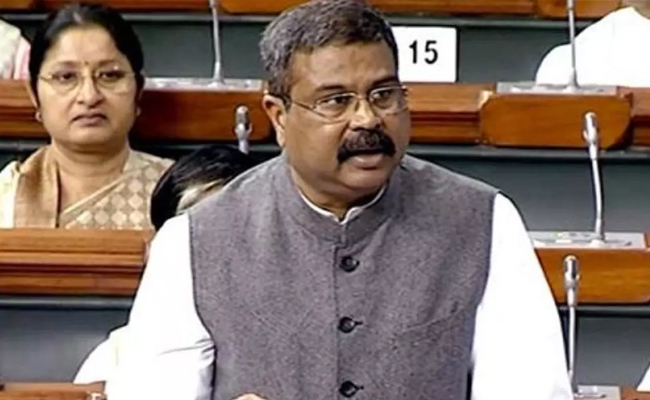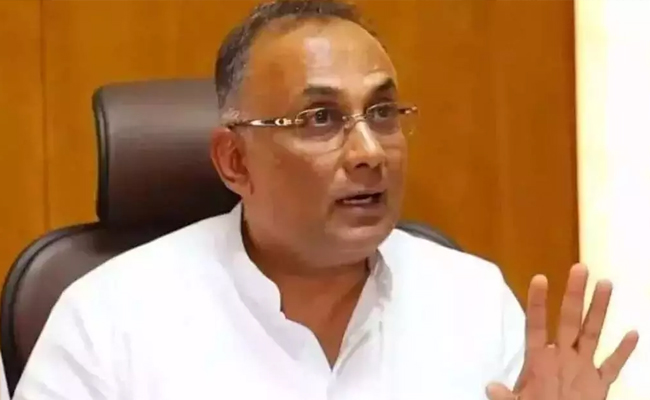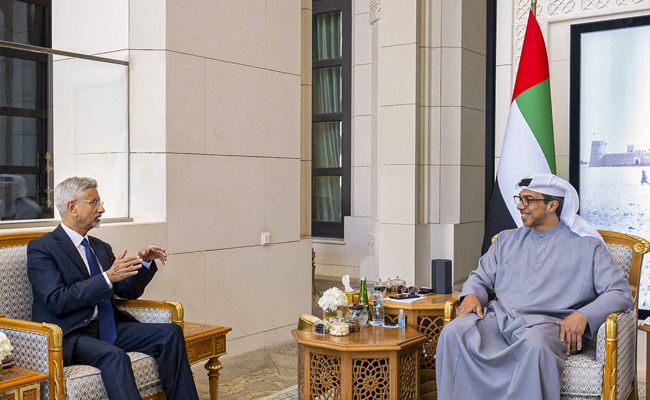Rabat (Morocco) (AP/PTI): A rare deluge of rainfall left blue lagoons of water amid the palm trees and sand dunes of the Sahara desert, nourishing some of its most drought-stricken regions with more water than many had seen in decades.
Southeastern Morocco's desert is among the most arid places in the world and rarely experiences rain in late summer.
The Moroccan government said two days of rainfall in September had exceeded yearly averages in several areas that get an average of less than 250 millimetres annually, including Tata, one of the areas hit hardest. In Tagounite, a village about 450 kms south of the capital Rabat, more than 100 mm rain was recorded in a 24-hour period.
The storms provided more rainfall than had been seen in decades, leaving striking images of bountiful water gushing through the Saharan sands amid castles and desert flora.
In desert communities frequented by the many tourists who visit the Sahara, 4x4s motored through the puddles and residents surveyed the scene in awe.
“It's been 30 to 50 years since we've had this much rain in such a short space of time," said Houssine Youabeb of Morocco's General Directorate of Meteorology.
Such rains, which meteorologists are calling an extra-tropical storm, may indeed change the course of the region's weather in months and years to come as the air retains more moisture, causing more evaporation and drawing more storms, Youabeb said.
Six consecutive years of drought have posed challenges for much of Morocco, forcing farmers to leave fields fallow and cities and villages to ration water consumption.
The bounty of rainfall will likely help refill the large groundwater aquifers that lie beneath the desert and are relied upon to supply water in desert communities.
The region's dammed reservoirs reported refilling at record rates throughout September. However, it's unclear how far September's rains will go toward alleviating drought.
Yet water gushing through the sands and oases left more than 20 dead in Morocco and Algeria and damaged the farmers' harvests, forcing the government to allocate emergency relief funds, including in some areas affected by last year's earthquake.
NASA satellites showed water rushing in to fill Lake Iriqui, a famous lakebed between Zagora and Tata that had been dry for 50 years.
Let the Truth be known. If you read VB and like VB, please be a VB Supporter and Help us deliver the Truth to one and all.
New Delhi: A bill to set up a 13-member body to regulate institutions of higher education was introduced in the Lok Sabha on Monday.
Union Education Minister Dharmendra Pradhan introduced the Viksit Bharat Shiksha Adhishthan Bill, which seeks to establish an overarching higher education commission along with three councils for regulation, accreditation, and ensuring academic standards for universities and higher education institutions in India.
Meanwhile, the move drew strong opposition, with members warning that it could weaken institutional autonomy and result in excessive centralisation of higher education in India.
The Viksit Bharat Shiksha Adhishthan Bill, 2025, earlier known as the Higher Education Council of India (HECI) Bill, has been introduced in line with the National Education Policy (NEP) 2020.
The proposed legislation seeks to merge three existing regulatory bodies, the University Grants Commission (UGC), the All India Council for Technical Education (AICTE), and the National Council for Teacher Education (NCTE), into a single unified body called the Viksit Bharat Shiksha Adhishthan.
At present, the UGC regulates non-technical higher education institutions, the AICTE oversees technical education, and the NCTE governs teacher education in India.
Under the proposed framework, the new commission will function through three separate councils responsible for regulation, accreditation, and the maintenance of academic standards across universities and higher education institutions in the country.
According to the Bill, the present challenges faced by higher educational institutions due to the multiplicity of regulators having non-harmonised regulatory approval protocols will be done away with.
The higher education commission, which will be headed by a chairperson appointed by the President of India, will cover all central universities and colleges under it, institutes of national importance functioning under the administrative purview of the Ministry of Education, including IITs, NITs, IISc, IISERs, IIMs, and IIITs.
At present, IITs and IIMs are not regulated by the University Grants Commission (UGC).
Government to refer bill to JPC; Oppn slams it
The government has expressed its willingness to refer it to a joint committee after several members of the Lok Sabha expressed strong opposition to the Bill, stating that they were not given time to study its provisions.
Responding to the opposition, Parliamentary Affairs Minister Kiren Rijiju said the government intends to refer the Bill to a Joint Parliamentary Committee (JPC) for detailed examination.
Congress Lok Sabha MP Manish Tewari warned that the Bill could result in “excessive centralisation” of higher education. He argued that the proposed law violates the constitutional division of legislative powers between the Union and the states.
According to him, the Bill goes beyond setting academic standards and intrudes into areas such as administration, affiliation, and the establishment and closure of university campuses. These matters, he said, fall under Entry 25 of the Concurrent List and Entry 32 of the State List, which cover the incorporation and regulation of state universities.
Tewari further stated that the Bill suffers from “excessive delegation of legislative power” to the proposed commission. He pointed out that crucial aspects such as accreditation frameworks, degree-granting powers, penalties, institutional autonomy, and even the supersession of institutions are left to be decided through rules, regulations, and executive directions. He argued that this amounts to a violation of established constitutional principles governing delegated legislation.
Under the Bill, the regulatory council will have the power to impose heavy penalties on higher education institutions for violating provisions of the Act or related rules. Penalties range from ₹10 lakh to ₹75 lakh for repeated violations, while establishing an institution without approval from the commission or the state government could attract a fine of up to ₹2 crore.
Concerns were also raised by members from southern states over the Hindi nomenclature of the Bill. N.K. Premachandran, an MP from the Revolutionary Socialist Party representing Kollam in Kerala, said even the name of the Bill was difficult to pronounce.
He pointed out that under Article 348 of the Constitution, the text of any Bill introduced in Parliament must be in English unless Parliament decides otherwise.
DMK MP T.M. Selvaganapathy also criticised the government for naming laws and schemes only in Hindi. He said the Constitution clearly mandates that the nomenclature of a Bill should be in English so that citizens across the country can understand its intent.
Congress MP S. Jothimani from Tamil Nadu’s Karur constituency described the Bill as another attempt to impose Hindi and termed it “an attack on federalism.”



_vb_22.jpeg)

